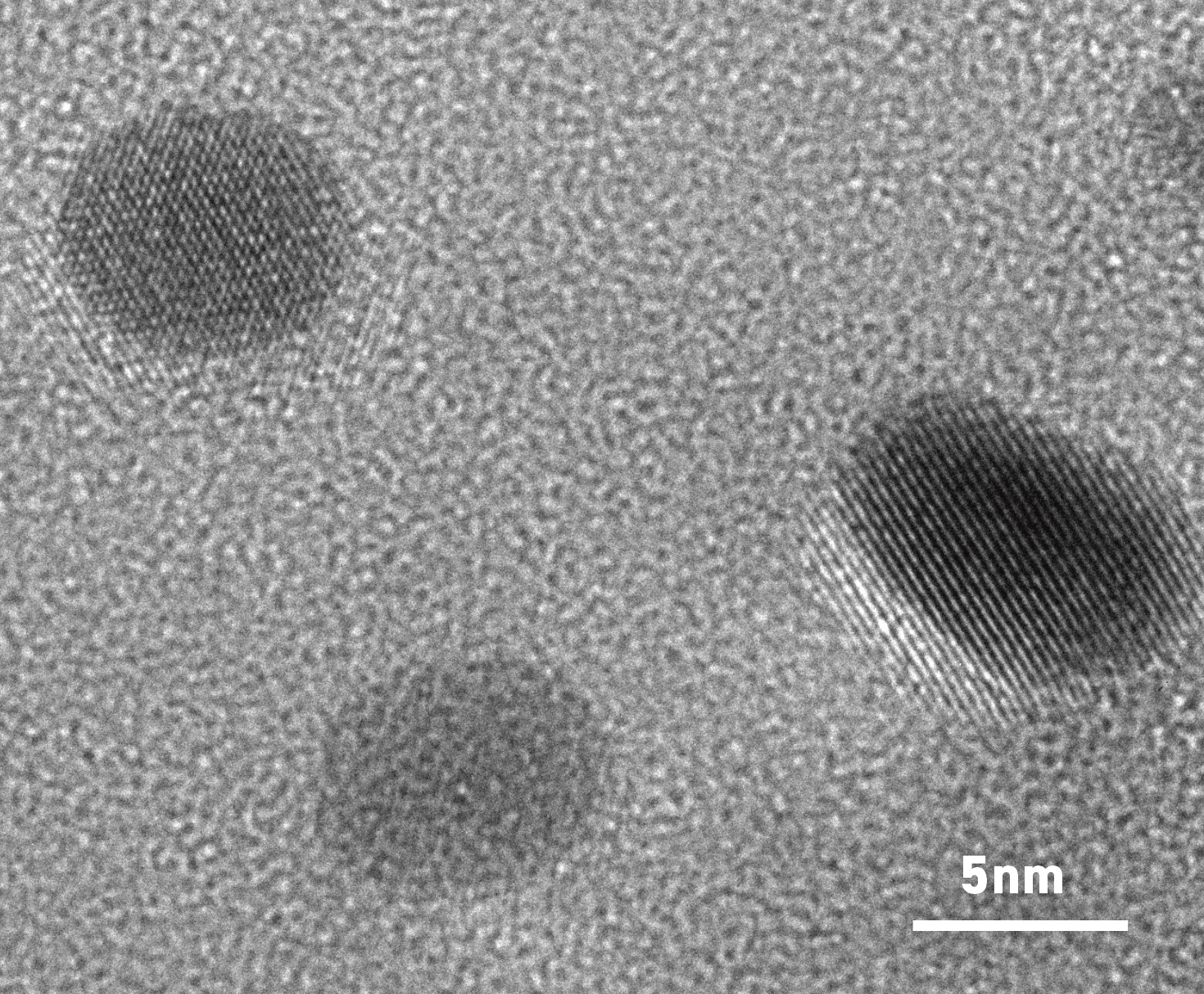Researchers at the Centre for Exploration Targeting (CET) at the University of Western Australia (UWA) are building this knowledge, which is very valuable to the mineral exploration companies as it allows them to better predict where undiscovered ore bodies might be found.
Metals like gold and nickel tend to be carried through the Earth’s crust along with sulfur, so understanding how sulfur moves can help trace where metals are likely to occur. The Microscopy Australia facility at UWA, working with CET researchers, have used our SIMS instrument to develop a way to identify unique sulfur fingerprints associated with regions rich in gold and nickel. Mining companies can test samples from their prospective mine sites and compare them to those in the database. This informs further exploration and adds value to Australia’s resources sector, and economy generally.

TEM image of gold nanoparticles in an amorphous silica mineral.
At a smaller size scale transmission electron microscopy (TEM), is revealing the structure of gold at the nanoscale, which is used to identify how sought-after high-grade gold deposits form and therefore where they are likely to be. These are much easier to mine, more environmentally sustainable and cost-effective but are rare and difficult to find. Built on earlier work with Newmont Mining Corporation, an ARC Linkage Project is supporting Northern Star Resources Ltd, Karora Resources Pty Ltd & Fosterville Gold Mine Pty Ltd, as they work with CET researchers. They are using Microscopy Australia to better understand high-grade gold deposits and continue to refine exploration strategies for gold resources in Australia.
Array
December 13, 2021